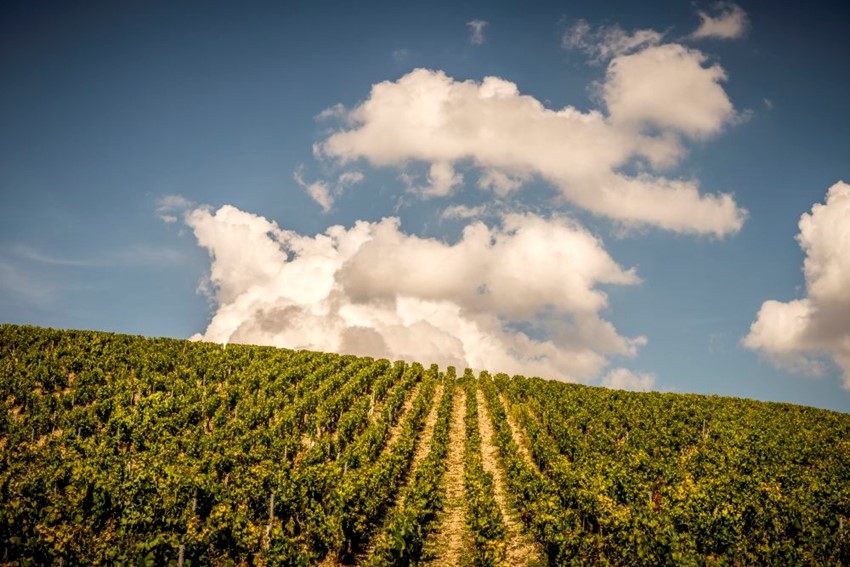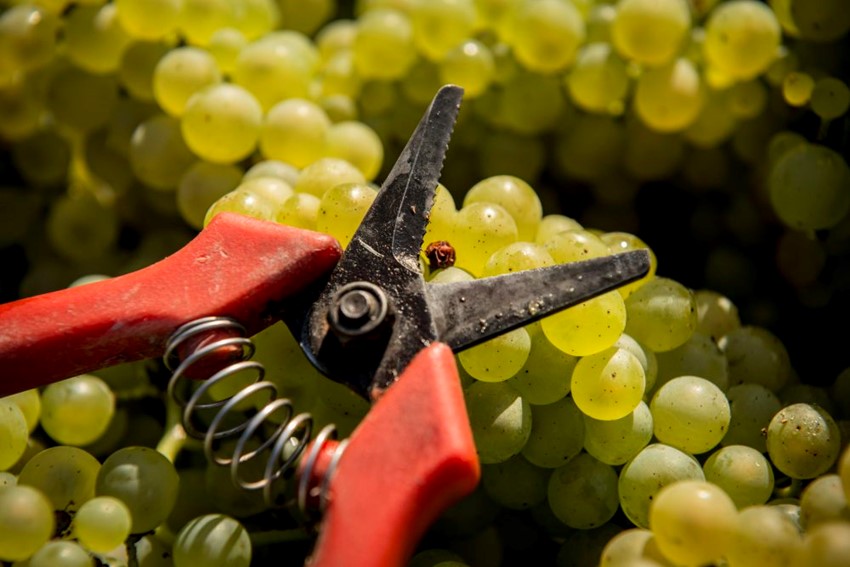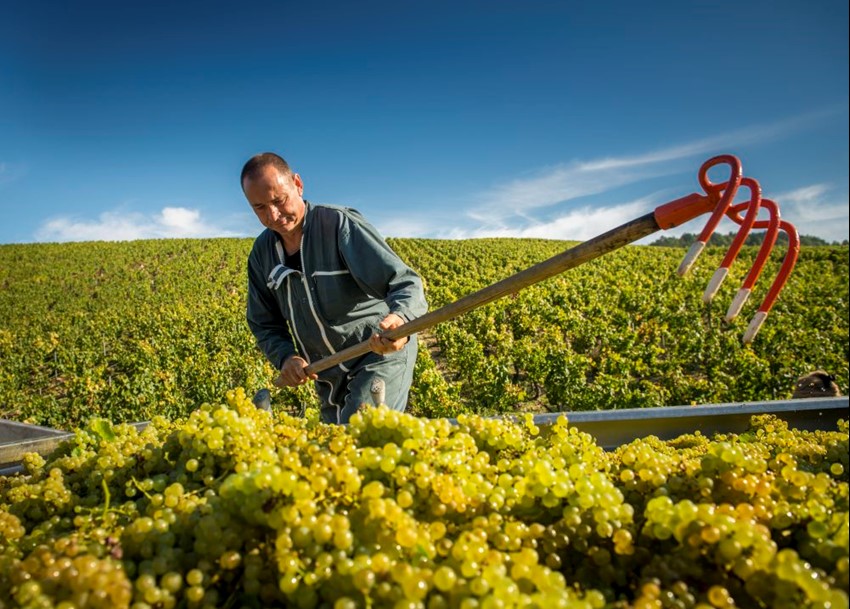They say that British people are obsessed with talking about the weather – and perhaps that is because it changes from day to day, and sometimes minute to minute. But what has been happening in recent months and years is not normal weather chatter. With the UK reaching over 40°C this summer for the first time on record, I’d like to see anyone deny the effects of climate change.

Wine is, quite simply, an agricultural product – and has felt the brunt of Mother Nature’s changing nature. Wildfires, heat waves, hailstorms, flash floods, droughts and frosts are wreaking havoc among the world’s vineyards. And Chablis was one of the worst affected by last year’s deadly combination of early budburst followed by black frost – leading to producers like La Chablisienne losing up to 80% of their 2021 crop.
La Chablisienne export director Olivier Masmondet says, “2021 was really a disaster; you could visibly see the toll nature took. There was a massive loss of quantity and we had to fight to get good quality out of the grapes. In the end, the quality was good, and the wines are juicy and pleasant, but they don’t have the usual longevity.”
Considering 2022
What’s done is done and each year brings with it the promise of something new. So how is the 2022 harvest shaping up? “It has been a very different year,” explains Olivier. “With a thunderstorm in June we received 60mm of rain – which is more water than the normal total rainfall for June. This was followed by the recent heat waves, but luckily it hasn’t affected the vines too much. The vineyards are looking very good, with good numbers of bunches and small berries.”
Chablis did experience another frost event in spring, but losses are ‘only’ estimated at about 20%, while hailstorms caused further, but localised, issues in the regions of Mont de Milieu, Mont de Tonnerre, and parts of Petit Chablis.
“If the weather stays consistent, we should have an earlier harvest than 2021, but more in line with recent years’ development; we anticipate starting in late August,” Olivier says. “Nature is happy again in 2022 – it is glorious! While volumes are still 20% down, there is a renewed energy – vines are blooming and booming; there is a return of life.”

“This also has a positive impact on the people; our wellbeing has improved, and we feel less stressed and like we can breathe again,” he says.
From soil to glass
Olivier explains that the vines were managed more ‘normally’ this year – a bit of leaf thinning (instead of green harvesting), followed by some select tipping and topping, and the occasional fungal treatments – a lot less than in 2021.
Last year they had to take a very micro approach to viticulture, managing vineyards on a local level to overcome specific challenges, but 2022 is seeing the return of a more normal cycle and less need for interventions.
Looking towards harvest, the vineyard team – led by vineyard manager Christophe Lecomte – visits the parcels every day and suggests to the growers when to harvest, based on both sugar and phenolic ripeness. In the winery, Vincent Bartement has been guiding the La Chablisienne team for 13 years and was again awarded best White Winemaker of the Year at the 2022 IWC awards.

Native yeasts are encouraged for fermentation, but in years like 2021 there is more need for inoculation to ensure clean, dry wines. Similarly, Vincent usually allows all the Chardonnay to undergo malolactic fermentation (malo) – but in a year like 2021, with a lower potential alcohol, they blocked malo in about 80% of the wines.
Their oaking regime has been evolving in recent years, and Vincent is moving most wines from 228L Burgundy barrels to 400L barrels, aiming for less of an oak impact and a more balanced wine. This has an added benefit in terms of sustainability, as fewer barrels are required for the same amount of wine.
Their approach to oaking ranges from no oak on the Petit and up to 10% on the Chablis, to more and longer time in oak when it gets to the Premier and Grand Cru Chablis (50% and 60% respectively).
Adapting for the future
Mother Nature has spoken – and we need to listen, and change. At La Chablisienne, their approach to sustainability is to do a lot of small things to make a big difference. In addition to swapping to larger barrels, they have also changed the way they clean their barrels. Instead of using chemicals, they clean the barrels by simply using water and a special ultrasound cleaning machine.
In the vineyards – of which they manage 1,200ha – they focus primarily on Terra Vitis and HVE (Haute Valeur Environnementale) certification, while 40ha are certified organic. Chateau Grenouilles, one of the rarest and most prestigious Chablis Grand Crus – of which the majority is owned by La Chablisienne – is 100% Terra Vitis certified.
The goal? To have 100% of their vineyards certified in the next six to seven years. For Olivier, Terra Vitis is the more important of the schemes, as not only does it automatically include HVE Level 3 certification*, but it also considers the impact on the soil, as well as the ethical elements of sustainability.
Because at the end of the day, making wine is about people and nature working together in harmony – creating something beautiful and delicious, while leaving the earth in a better place.
*”From 2020, producers who undergo certification under the Terra Vitis programme will automatically be granted the French government’s Haute Valeur Environnementale (HVE) Level 3 certification as well.” – thedrinksbusiness.com




